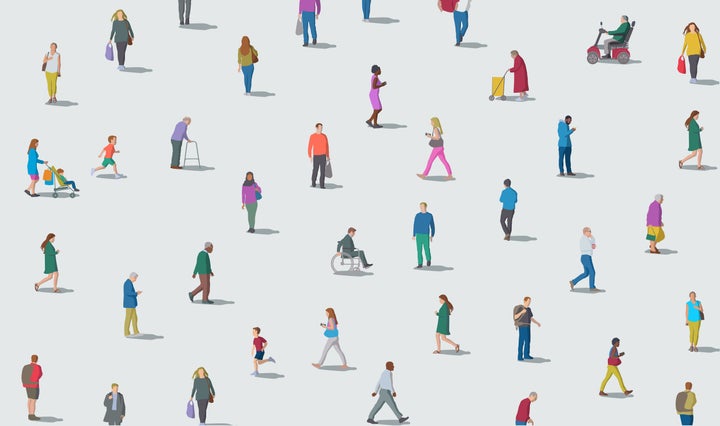Many of us have no way of knowing if we’ve had symptomless coronavirus, but an increasing number of studies suggest it could be more common than you think.
Around 8 in 10 coronavirus infections are mild or asymptomatic ― meaning the person had no symptoms ― according to the World Health Organization. Meanwhile 15% of infections are severe, and 5% are critical.
But that 8 in 10 statistic doesn’t specify how many people experience mild symptoms vs how many have the virus without feeling ill at all.
The Centers for Disease Control and Prevention has estimated that just over a third (35%) of COVID-19 infections are symptomless. Meanwhile a study of 9,000 people selected to take a coronavirus test in Iceland found 50% of them tested positive for COVID-19, but didn’t have any symptoms.
Studies from cruise ships suggest that figure could be even higher. Around 72% of people on board the Diamond Princess cruise ship who had COVID-19 were thought to have been asymptomatic, according to a preliminary study by the London School of Hygiene & Tropical Medicine.
Meanwhile, a new study of the infection on a different (and smaller) cruise ship discovered that 8 in 10 passengers and crew members who tested positive for COVID-19 were asymptomatic.
The expedition cruise ship was carrying 128 passengers and 95 crew members. It departed from Argentina for a planned 21-day cruise of the Antarctic in mid-March, after the WHO had declared a global pandemic.
The first case of fever was reported on day eight, researchers said, prompting the immediate adoption of infection control measures. As Argentina had closed its borders, the ship sailed to Uruguay, arriving on day 13. Eight passengers and crew required medical evacuation to hospital for respiratory failure.
On day 20, all the remaining passengers and crew were swab tested for coronavirus. More than half ― 128 of them ― tested positive.
In 10 instances, two passengers sharing the same cabin didn’t have the same test result. This is possibly because the current swab test returns a substantial number of false negative results, the study’s authors said.
Of those testing positive for the virus, 24 (or 1 in 5) people had symptoms, but 108 (8 in 10) people didn’t. This has implications for the easing of lockdown restrictions, said Professor Alan Smyth, joint editor-in-chief of the journal Thorax, where the study was published.
“It’s difficult to find a reliable estimate of the number of Covid positive patients who have no symptoms,” Smyth told HuffPost UK. “In early March, WHO suggested the figure might be only 1% ― very different from the 81% figure found on the cruise ship.”
As countries progress out of lockdown, the number of asymptomatic individuals may mean that a much higher percentage of the population than expected may have been infected with COVID-19, he said.
“These individuals may have immunity to COVID-19,” he said. “This would in turn reduce the chances of a ‘second peak’ in cases, and the size of the peak should one occur.”
He noted that while the population on the cruise ship was small, every single member was tested ― so this is a unique “natural experiment,” which will never be repeated elsewhere.
“There’s no reason why the passengers and crew on the ship are any more likely than the general population to be infected with COVID-19 but have no symptoms,” he said. “It’s therefore very plausible that the rate of 81% infected but symptom free might apply to the general population. This means that many more people may be (potentially) immune than was first thought.”

So now what?
While it’s good news that people aren’t getting ill from coronavirus ― and may even be immune ― this presents a problem if those people are still going to stores and to work, because they think they’re fine, but are inadvertently spreading it around.
Jenna Macciochi, an immunologist and author of “Immunity: The Science of Staying Well,” told HuffPost UK asymptomatic carriers are “one of the biggest challenges” with easing lockdown restrictions.
Face masks or covers could be useful in stopping people infecting each other, she suggested. We also need proper testing, tracking and tracing in place before easing restrictions so coronavirus hotspots can be locked down, she added.
“I think social distancing is going to be paramount as we start to lift restrictions, as well as good hygiene,” she said, listing practices such as disposing of tissues properly, washing hands regularly and putting on a mask and not touching your face until you’re ready to take it off.
This story originally appeared in HuffPost UK.
Experts are still learning about the novel coronavirus. The information in this story is what was known or available as of press time, but it’s possible guidance around COVID-19 could change as scientists discover more about the virus. Please check the Centers for Disease Control and Prevention for the most updated recommendations.
A HuffPost Guide To Coronavirus
Credit: Source link